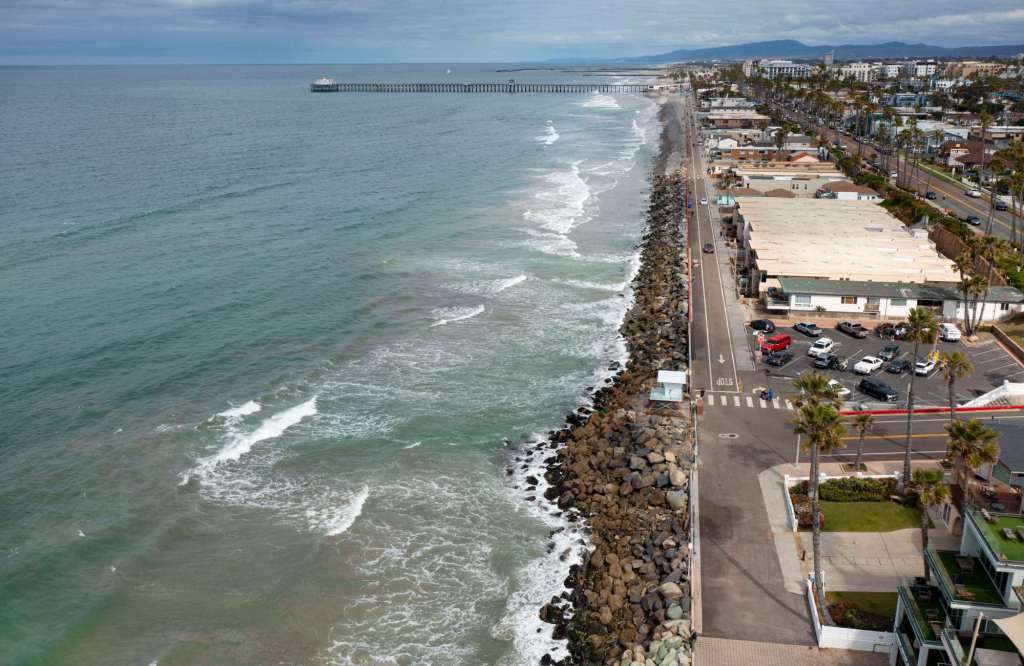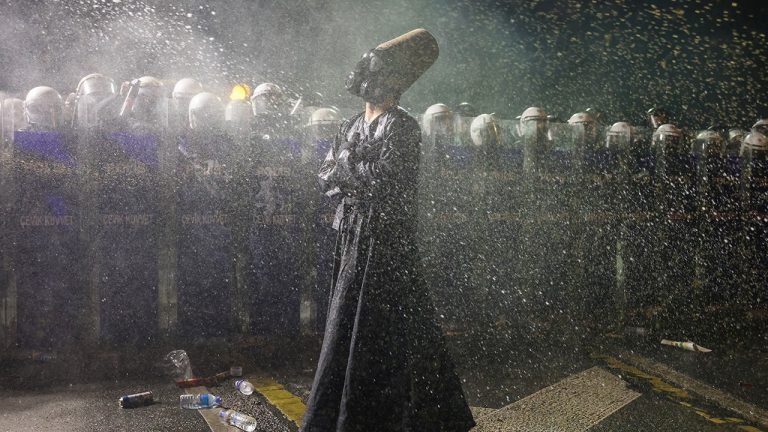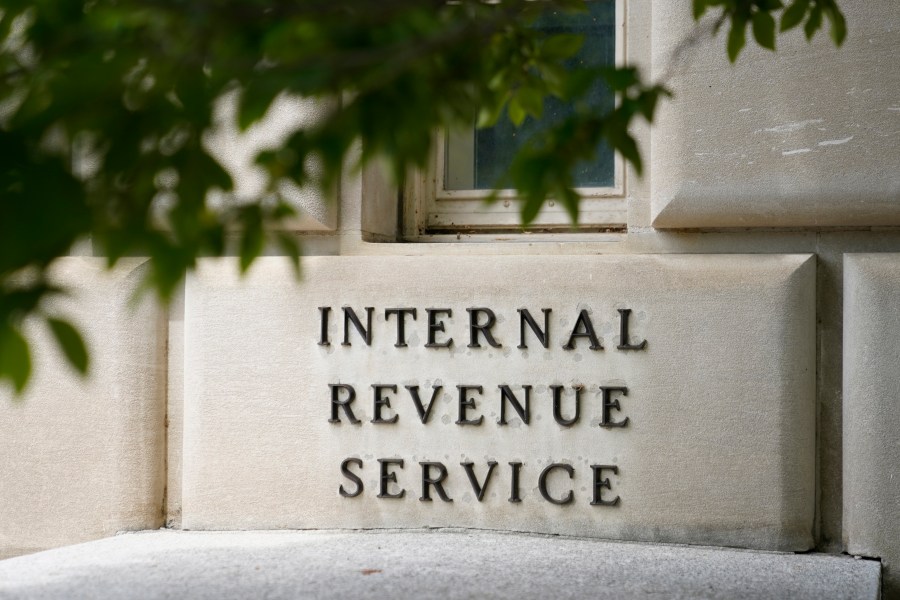
A location has been chosen for a proposal to restore nearly 1 million cubic yards of sand to Oceanside’s eroded beach and protect it by using a bold new method: building two headlands and an offshore artificial reef.
The decision is the latest step in a widely discussed project that could have far-reaching effects. Some people see it as an innovative solution to save Southern California’s shrinking beaches, one that other cities could follow. Others say the artificial structures are a potential disaster, likely to hasten erosion and steal sand from nearby communities.
The Oceanside City Council voted unanimously last week to place the pilot project between Tyson Street Park and Wisconsin Avenue, the northernmost of three beach segments considered. The project team spent six months analyzing the three areas before recommending the location, said Jayme Timberlake, the city’s coastal zone administrator.
“With this novel concept, we are testing out this new coastal management tool, hoping to prove its efficacy before we scale this project to additional areas,” Timberlake said.
The other two segments considered are just south of the pilot site. One is from Wisconsin to Buccaneer Beach, and the other from Buccaneer Beach to the Buena Vista Lagoon. Those segments could be added if the pilot goes well, she said.
Oceanside began looking for ideas in 2020 with a yearlong feasibility study that examined the erosion problem and suggested a number of possible long-term solutions. Those ideas included replenishment, building the reef and adding long, rock groins to hold the sand on the beach.
Oceanside’s immediate neighbor Carlsbad and other cities down the coast initially objected to the proposal because of possible effects it could have on the ocean currents flowing toward their beaches. They passed resolutions opposing the construction of any hard structures such as groins that could stop the migration of sand and cut into their supply.
Since then, Oceanside has worked hard on public outreach to bring its neighbors on board, emphasizing that the project could mean better beaches for everybody. Most of the cities, along with the California Coastal Commission, have adopted a wait-and-see attitude.
“Del Mar is still wary of downstream sand impacts, as are other downstream cities,” said Dwight Worden, a former Del Mar mayor. He chaired the San Diego Association of Governments Shoreline Preservation Working Group and was one of 10 voting members of a jury that reviewed submissions for the Oceanside project known as Re:Beach.
“But, the Re:Beach project design addresses this issue,” Worden said. “If it works as planned, the downstream cities, including Del Mar, should be OK. We will see how the theory plays out in the pilot program.”
Some people still have strong doubts. Two long-time Oceanside activists, Shari Mackin and Carolyn Krammer, oppose the idea.
“We have a proposal for a couple of headlands, or fat groins, a project that would have the same effect that groins would have on sand retention,” Mackin said. “It will starve the beach to the south.”
Also, she said, the headlands could contribute to dangerous rip currents and the artificial reef could degrade the waves that surfers love.
The raised, rounded headlands, as described in the proposal, would be protected from the waves by rock barriers, similar to an area of the beach that now supports the lifeguard headquarters building beneath the Oceanside pier. Instead of a building, the headlands would be topped by pedestrian paths, shade structures, fencing and native dune plants.
Two members of the local group Save Oceanside Sand voiced strong support, saying all coastal cities will learn and benefit from the project.
“Tonight is another significant milestone,” SOS president and CEO Bob Ashton said when the location was approved. “Other cities are closely following our journey.”

A local member of the Surfrider Foundation said Thursday the group sees improvements in the modified proposal, but concerns remain.
“We supported the recommended location but still have concerns about the project’s feasibility and potential adverse impacts to beaches to the south,” said Mitch Silverstein, policy manager for Surfrider’s San Diego County chapter.
“That said, it’s a much more thoughtful design than the previous groin field, which we opposed outright,” he added.
The headlands are called “living speed bumps” in the proposal by Australia-based design firm International Coastal Management. The Oceanside City Council awarded a contract to the firm Jan. 25, 2023, after an eight-month design competition for the Re:Beach project contract that included multiple meetings, public participation and the jury’s recommendation.
Funding for the engineering and design work is covered by the $2.59 million in American Rescue Plan Act funding that the city allocated to the project last year. The plan will need approval from the Coastal Commission and other state, federal and local agencies, and the city would have to find grants to cover the construction expected to cost between $30 million and $50 million.
Coastal Commission approval can be a high hurdle for any development project. Often it requires multiple modifications intended to lessen undesirable environmental effects. The commission has long opposed the construction of groins, seawalls and other shoreline modifications. However, the agency has softened its stance in recent years.
“We will continue to work with the city and encourage their creativity,” said Kate Huckelbridge, the commission’s executive director, in a discussion of the Oceanside project at a meeting last year. “It’s exactly the approach that we want people to take, to bring all the ideas to the table as we are trying to figure out how to adapt to sea-level rise.”
The artificial reef will be built about 900 feet offshore to dissipate wave energy, protect the beach and build sandbars to the lee and sides of the structure, Timberlake said.
Large-grained, high quality sand for the project will be dredged from deposits in what’s called a “borrow pit” in the ocean just outside the surf zone.
“The project team finalized approval of an Oceanside offshore borrow area,” Timberlake said. “This sand will be used for the initial pilot project construction and for adaptive management needs in the future.”
The expected 900,000 cubic yards of sand to be harvested is four times the amount Oceanside received in the San Diego Association of Government’s regional sand project in 2012, she said. While the local project hinges on retaining sand, eventually ocean currents will carry it outside the headlands, where it could enrich other nearby beaches.
“We look forward to moving ahead with design and construction of this transformational project to bring back Oceanside’s beautiful beaches,” said Jonathan Borrego, Oceanside’s city manager, in a news release after the council’s decision.
“We have a responsibility to preserve and protect one of Oceanside’s most treasured resources – its sandy beaches – for not only this generation to continue enjoying, but also the next,” Borrego said.
The project is one of several proposed or recently completed to protect San Diego County’s eroding beaches.
SANDAG began discussions of what would be its third regional sand project a little more than a year ago.
Coastal San Diego County cities including Oceanside agreed to share the $200,000 needed to launch SANDAG’s initial feasibility studies. Two Orange County cities — San Clemente and Dana Point — recently joined the group and chipped in their portion of the study costs.
A long awaited federal project led by the U.S. Army Corps of Engineers widened beaches in Encinitas and Solana Beach this summer. That project is expected to continue periodically in phases for 50 years.
Coastal cities also place sand on their beaches from other sources. The Corps of Engineers dredges the Oceanside harbor entrance annually and places that on its northern beaches.
Encinitas, Solana Beach and Del Mar get beach sand every few years from dredging the lagoons along their borders.







